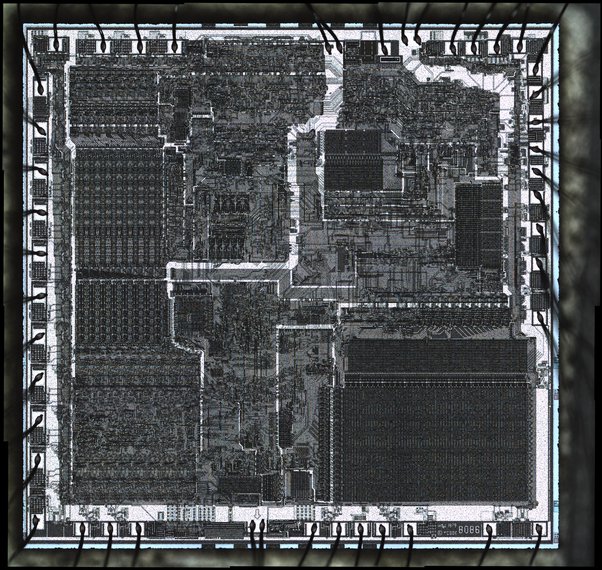The invention of the microprocessor was absolutely monumental in the development of Computing. The reason why computers do not occupy entire rooms is because of the microprocessor scaling down the physical size of computers over time whilst also increasing the processing power. Computers exist all around us and the convenience of being able to have a small computer within your pocket that can tell you the time, access the internet and communicate with people wherever you are is down to the development of the microprocessor.
It is important to understand where microprocessors came from. Early computers in the 1940s took up entire rooms because they relied on tubes to control their logical operations. Tubes were mechanical on/off switches that were bulky, unreliable and prone to overheating. For computers to become more efficient and also for them to be downscaled, they needed a device that could emulate the on/off binary function of a Tube but on a much smaller scale. The transistor was the first step in this direction and was made by Bell Laboratories in 1947. They performed the same job as the Tube but were smaller, more reliable and less power-hungry due to not needing an electron beam. There were many designs for transistors over the next decade but in 1959 the MOSFET (metal-oxide-semiconductor-field-effect transistor) was invented and made it possible to fit large amounts of transistors onto a small chip rather than having to use multiple discrete transistors.
With the creation of MOSFET technology came along the possibility of a device capable of performing the same calculations and logic operations that the older computers could do but on a much smaller scale and with higher levels of performance. And in 1971, the first microprocessor was created by Intel. It was called the Intel 4004 and was created for the Japanese company Busicom to go inside of their 141-PF calculators. The initial design proposed comprised of 7 chips but was reduced to just 4 due to lower costs. This was an important milestone as it began the process of processor miniaturization. The 4004 fitted 2300 transistors on a silicon wafer with a 2-inch diameter. The chip could also operate at 740KHz — and at roughly eight clock cycles per instruction cycle (fetch, decode, execute), which means the chip was capable of executing up to 92,600 instructions per second. (Burke, 2016). The next step was the Intel 8008, manufactured for CTC’s (Computer Terminal Corporation) Datapoint 2200. However, Intel made it commercially available after CTC abandoned the project. It was the world’s first 8-bit microprocessor, and since it was originally made for a standalone computer terminal, it had the potential to be used in personal computers.
The Intel 8080 chip followed, which boasted a maximum clock speed of 3125 KHz compared to the 8008’s 800 KHz and had a 16-bit address bus which enabled access to 64KiB of memory compared to the 16KB available on the 8008. The 8080 chip was used in the Altair 8800 which is considered the first commercially successful personal computer. There were several other personal computers that used the 8080 following after the Altair and was even used in TAITO’s space invader arcade machine. The next big step was the Intel 8086 which was the first commercially available 16-bit CPU and was the beginning of Intel’s x86 processor family whose proverbial DNA can be traced in present-day processors due to the x86 architecture being present on many modern-day CPUs. To put it simply, over 90% of the world’s computers have brains that only understand the x86 instruction set for translating software instructions into computer functioning (Tang, 2011). The 8086 had 29,000 transistors built on a 3000-nanometre design (Cumins, 2022). It improved upon the 8008’s maximum clock speed of 2 MHz with its maximum clock speed of 10MHz and the potential to process 0.75 million instructions per second. The IBM 5150 (the first PC) came with the Intel 8088 which was nearly identical to the 8086 but was compatible with 8-bit systems. This marked the beginning of the mass adoption of home computing in the early 1980s. It was now possible to have a computer that could fit on a desk. And with the introduction of Windows 1, personal computing was now accessible with its easy-to-understand GUI. Computers could be used in the workplace, in education and at home.
Since the creation of the microprocessor, computers have interfaced with daily life with powerful processors scaling down into devices that can fit inside our pockets. Because of the miniaturization of computers over time, anyone can have access to one when before computers took up the size of rooms and were limited to military use or research projects. And with the advent of the internet, the common person has access to both computers and a global network of information and connectivity that allows people to use computers to communicate with others all across the world and gives people access to a vast wealth of information. When before a message would have to be carried physically across the world if you wanted to send it to someone internationally, you can now send a message virtually in a matter of seconds to somewhere as far as Australia. Whilst the Internet has led to our lives becoming easier, simpler and faster we would not have access to it if it were not for the microprocessor and the miniaturization of computing power. If computer hardware was not available to the common man, the internet would not be nearly as widespread as it is today. So whilst the Internet is extremely important to our lives today, the microprocessor allowed the common person to access it in the first place.
References & Further Reading
Anon, 2022. Transistor, Wikipedia.
Burke, D., 2016. Linkedin.
Chin, S., 2022. Milestones in Microprocessor Development.
Cumins, N., 2022. Intel Processors Over the Years.
Edwards, B., 2018. Birth of a standard: The Intel 8086 microprocessor turns 40 today.
Mackenzie, I., 2011. The man who invented the microprocessor.
